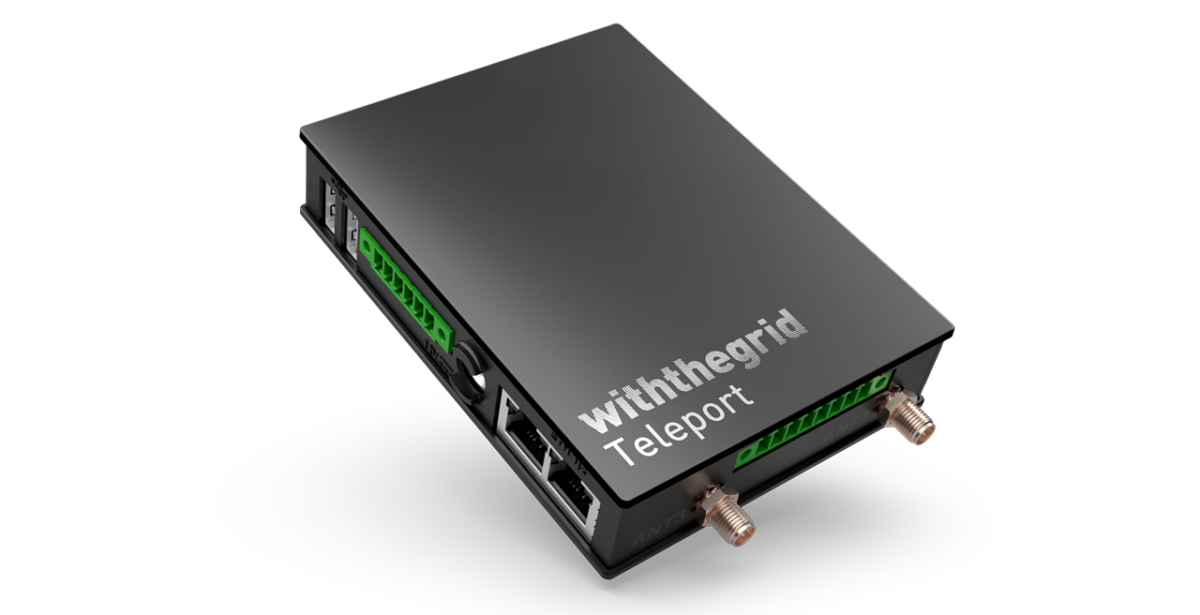Starting in 2024, all new solar and wind plants in The Netherlands with a capacity greater than 1 MW will be required to enable communications between the grid and energy assets through a so-called real-time interface (RTI).
This measure is intended to improve the grid congestion issues that have been threatening the deployment of additional renewable energy capacity over the last three years and has forced all operators to take measures and seek creative solutions to reduce the grid's burden.
The RTI has to be compliant with the International Electrotechnical Commission 61850 standard, which defines communication protocols for intelligent electronic devices at electrical substations. The requirement is in line with the framework established by the European Commission Regulation (EU) 2016/631.
One of the first Dutch vendors with a stand-alone RTI solution for PV plant operators is Withthegrid. Its Teleport product has been approved in lab tests by Norwegian classification society DNV on behalf of Netbeheer Nederland, the Dutch association of national-regional electricity and gas network operators. It is now being validated in the field by the three main grid operators, according to Paul Mignot, CEO, Withthegrid.
The Teleport is compatible with a number of brand-name inverters. It can also be connected to a battery system, wind turbines, and metering equipment. It uses standard data communications cabling, such as RS232, RS485, or Ethernet cables. It includes relevant protocols, such as Modbus, Open Charge Point Protocol, and SunSpec, which are used in inverters, electric vehicle chargers, and battery systems. It comes equipped with European-grade security and encryption, including no inbound communication channels.
The device sits between the endpoint of the distribution system operator (DSO) and the central PV inverter. It receives grid congestion signals from the DSO endpoint to limit power production, or balancing market signals from the transmission system operator (TSO), and it can then send commands, such as “limit production power” to the central inverter in a PV plant based on the owners' parameter settings.
From the grid perspective, it contributes to a balanced grid and greater safety of infrastructure. For plant operators, it makes it possible to ramp up and ramp down production within seconds, according to Mignot. “This kind of flexibility on the part of the asset owner avoids waste and financial losses,” Mignot told pv magazine.
Siemens has an RTI-compliant product that has similarly been approved for field trials, according to the website of Netbeheer Nederland.
Popular content
The Netherlands urgently needs to address grid constraints, as high volumes of solar capacity will be deployed in the years ahead. Over the past two years, Liander has implemented a number of measures to increase grid capacity in several areas facing grid constraints, as such bottlenecks are preventing more renewables from going online. These measures include the deployment of two giant transformers and congestion management for grid bottlenecks.
Tennet also recently developed an interactive online map showing the locations in the country where the power grid is most congested.
Dutch power and gas supplier Liander recently revealed this week that residential PV system owners experienced three times as many curtailment events in the first half of 2023 than they did in the same period last year in the provinces of Gelderland, Noord-Holland, Flevoland, Friesland, and Zuid-Holland.
As of June 2022, the Netherlands had a cumulative installed PV capacity of 16.5 GW, with 3,803 MW installed in 2021 and 3,882 MW installed in 2022, according to CBS, the nation's statistics agency.
This content is protected by copyright and may not be reused. If you want to cooperate with us and would like to reuse some of our content, please contact: editors@pv-magazine.com.


2 comments
By submitting this form you agree to pv magazine using your data for the purposes of publishing your comment.
Your personal data will only be disclosed or otherwise transmitted to third parties for the purposes of spam filtering or if this is necessary for technical maintenance of the website. Any other transfer to third parties will not take place unless this is justified on the basis of applicable data protection regulations or if pv magazine is legally obliged to do so.
You may revoke this consent at any time with effect for the future, in which case your personal data will be deleted immediately. Otherwise, your data will be deleted if pv magazine has processed your request or the purpose of data storage is fulfilled.
Further information on data privacy can be found in our Data Protection Policy.